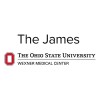Beating Lung Cancer in Ohio Protocol in Improving Survival in Patients With Stage IV Non-Small Cell Lung Cancer (BLCIO)
Cigarette Smoker, Current Smoker, Lung Adenocarcinoma

About this trial
This is an interventional health services research trial for Cigarette Smoker
Eligibility Criteria
Inclusion Criteria:
- AIM 1-3
Pathologically confirmed stage IV NSCLC (with any Eastern Cooperative Oncology Group [ECOG] performance status, and any NSCLC - adenocarcinoma, squamous cell, etc.) with available imaging OR patients who do not yet have their staging completed, but in the judgment of the physician are likely to be stage IV;
- Patients may be enrolled if the recruiter cannot reach the patient by the first office visit, preferably prior to starting therapy and no later than one month after starting therapy; (NCCN guidelines allow for a switch to targeted therapy from chemotherapy if testing comes back positive after starting chemotherapy)
- English speaking; and
- Willing to provide access to medical records, insurance and billing data, biospecimens and respond to questionnaires, typically by phone, but possibly to include online or in-person surveys
- AIM 3 ONLY
- Patients must be current smokers who smoke at least one cigarette most days per week, or recent quitters who smoked at least one cigarette most days per week (< 3 months); and
- Household members must be current smokers, defined as smoking at least one cigarette most days per week
- Hearing and vision impairments that would prevent ability to complete consent, interviews, or sample collection
Exclusion Criteria:
- Being treated with definitive chemoradiotherapy or surgery
- Receiving treatment for advanced lung cancer for over one month before enrollment; OR
Sites / Locations
- Ohio State University Comprehensive Cancer CenterRecruiting
Arms of the Study
Arm 1
Arm 2
Active Comparator
Experimental
Arm I (UC)
Arm II (AGIT/DS)
Patients receive usual care and undergo collection of tumor tissue and blood sample for the repository. Patients who smoke or have recently quit smoking and their household members who smoke may also undergo smoking cessation via usual care or NCCN driven-CTC/DS.
Patients undergo collection of tumor tissue for analysis using FoundationOne assay and blood sample for analysis using FoundationACT blood circulating tumor DNA assay. Patients who smoke or have recently quit smoking and their household members who smoke may also undergo smoking cessation via usual care or NCCN driven-CTC/DS.
Outcomes
Primary Outcome Measures
Secondary Outcome Measures
Full Information
1. Study Identification
2. Study Status
3. Sponsor/Collaborators
4. Oversight
5. Study Description
6. Conditions and Keywords
7. Study Design
8. Arms, Groups, and Interventions
10. Eligibility
12. IPD Sharing Statement
Learn more about this trial
